Each year the staff of the Aero-News Network attempts to name
those aircraft that distinguish themselves in the previous year.
This year, like previous years, has been a difficult one to judge
from the standpoint of determining what we like to call the "Best
of the Breed."

 The general aviation industry, after
several years of somewhat revolutionary updates, is settling into a
more evolutionary path at the moment... one that eschews truly
monumental upgrades, but still manages to demonstrate exciting
progress and better products from year to year. And, as each of
these products evolves and becomes better from year to year, it
sure as hell makes our task a whole lot more difficult in
trying to distinguish one truly outstanding aircraft from another.
2006 represents the most difficult year we have encountered in
attempting to not only name the best Plane Of The Year, but the
best plane in a number of pivotal categories.
The general aviation industry, after
several years of somewhat revolutionary updates, is settling into a
more evolutionary path at the moment... one that eschews truly
monumental upgrades, but still manages to demonstrate exciting
progress and better products from year to year. And, as each of
these products evolves and becomes better from year to year, it
sure as hell makes our task a whole lot more difficult in
trying to distinguish one truly outstanding aircraft from another.
2006 represents the most difficult year we have encountered in
attempting to not only name the best Plane Of The Year, but the
best plane in a number of pivotal categories.
As a matter of fact, it strikes us that naming an overall "best"
aircraft across the entire spectrum of general aviation is probably
no longer reasonable. There are simply too many aircraft that have
distinguished themselves in too many outstanding ways for one to
truly be called better than the other on an overall basis. One
man's perfect high-speed Hot-Rod, for instance, becomes the
expensive "way too hot to handle" mistake of another pilot whose
mission requirements may differ markedly. So... we're going to cop
out -- just a bit, mind you. We will name the best aircraft in
individual categories, and reserve the right in the future to
whittle down those categories as necessary. But, the fact of the
matter is that no one airplane is all things to all pilots, and
within the spectrum that we have decided on, these are the aircraft
selections that truly impressed us in each of five categories.
- GA Piston Single
- GA Piston Twin
- SA Experimental Kit
- E-LSA Kit
- S-LSA RTF (Ready To Fly)
Let me also note that while aircraft that previously were named
Best Of Breed in any category, or overall, are eligible for
inclusion in this year's list, we have decided to make it more
difficult (in our judging protocols) for a previous winner to take
the top spot in our judging criteria, so that a repeat winner truly
earns the distinction. Please also note that there are a number of
new categories under consideration, covering other aspects of
aviation, included the BizAv segment, but that we're going to wait
until 2007 before we add those aircraft our annual judging
criteria.
Herewith, our final selections for the category of GA Piston
Single...
Cessna T206H Turbo Stationair
With seating for six, the Turbo-Stationair is one of the few GA
cruisers that can (usually) take the whole family. And, of course,
its a Cessna... which carries an undeniable cache to the tens of
thousands of pilots who came into the aero-world courtesy of a
Cessna 150 or 152 (and you know who you are...).

Powered by a Textron Lycoming TIO-540-AJ1A, the T206 cruises 164
knots at 20,000 feet, has a ROC of 1050 fpm, stalls at 54 knots
(Vso) and needs less than 1000 feet to get off the ground and head
for the heavens. Landing requirements are said to be 735 feet.
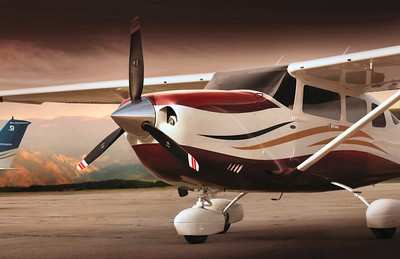
With a 1266 pound useful load, the T206H makes no excuses in
terms of load carrying and offers the handling that has been
typical of all of Cessna's high-wing birds... solid, stable and
easy to fly.
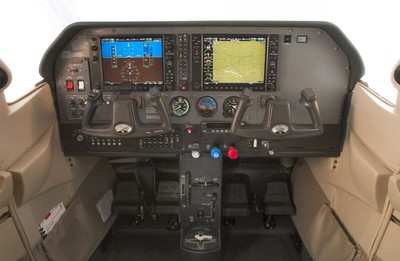
Now equipped with Garmin's G1000, the T206H has a lot going for
it and for the pilot looking for serious payload and the ability to
get over a lot of weather and high terrain, the $482,160 Turbo
Stationair is an easy bird to recommend.
Cirrus SR22 GTS Turbo
Let's face it, the Cirrus SR22 Turbo-Normalized addition to the
CD fleet is a unique effort on the part of Cirrus Design. This is
the airplane that Alan Klapmeier once said he never build --
nonetheless, it says much about Cirrus that despite their
misgivings about such a market, that they're willing to listen to
their clientele, and provide them with what they asked for. For a
significant portion of the Cirrus community, a little more oomph
in the high-altitude game, and the ability to operate up
through the mid-20,000 foot level, gives this aircraft a much
needed utility -- with some caveats.
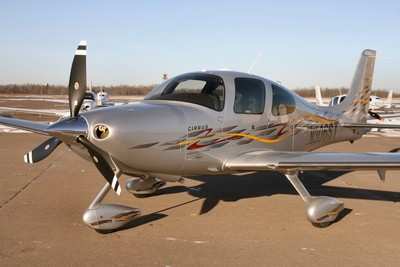
Yes, there are faster airplanes, and yes, there are airplanes
with more payload and more range. But... they're not a Cirrus --
and that's the whole point of this airplane. This is the heavy
breathing bird that the Cirrus community asked for and Cirrus not
only delivered, but they delivered an aircraft with some unique
capabilities.

Our flight in the Turbo-Normalized SR22 produced a few
surprises. The first is that Cirrus is wrong about their cruise
numbers... claiming 211 knots at 25,000 feet, where we consistently
got 214 or better. Our test flight slightly exceeded all of their
promised time to climb numbers (taking into account the
atmospherics and the mission load), and the ease with which this
aircraft can be operated cannot possibly be oversold. While a
number of turbocharged airplanes, including a number of
Turbo-Normalized airplanes, require extensive monitoring of various
engine temperatures and gauges, the system installed in this
aircraft requires the 25,000 foot cruiser to do two things: set
their power, and set their fuel flow. That's it. No other effort is
required -- the operational requirements for the aircraft's
powerplant are simply child's play.

However, it was not the simplicity of the systems, or even the
bettered performance numbers that blew us away. The single most
striking aspect of this airplane that revealed itself at 25,000
feet came about as a number of stability and control
investigations, conducted more and more aggressively as its profile
became clear, revealed an airplane that was rock stable and truly
obedient in both static and dynamic behavior. As a mater of fact,
we were hard pressed to discern true differences in the airplane's
manners at 25,000 feet or at pattern altitude. I kid you not; this
blew us away. At reasonably high altitudes, I have yet to fly a
comparable airplane that is as consistent in its stability and
control profile. What this produces is a thoroughly predictable,
stable, controllable, and easy to fly airplane that is going to
require a higher degree of stupidity to screw up than most others.
You've got to like that. Also notable were the many, virtually too
numerous to count, little improvements noted throughout the
airframe that not only improve the aircraft's utility, but continue
to refine the look and feel of luxury that this class of aircraft
fairly demands.
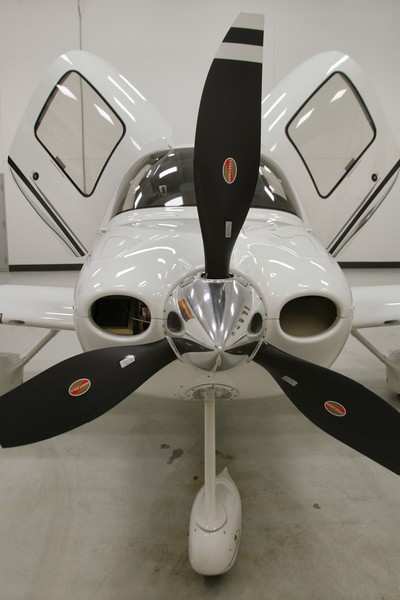
Mind you; the new bird requires a number of compromises from a
new owner in terms of a more nose-heavy CG, right from the get-go,
and killing off a fair amount of payload to accommodate all the new
goodies under the nose as well as a factory oxygen system in the
aft fuselage (a beautiful installation, by the way)... but despite
all that, this new Cirrus is a winner.
Columbia Aircraft Columbia 400
The Columbia 400 was awarded ANN's coveted "Best of Breed" award
for 2005... and it earned it. As impressed as were in 2004-5 with
the 235 kt Columbia 400 hot-rod; we can't help but be REALLY
impressed now. The new seats are a long-awaited answer to one of
the few annoying debits in the previous iteration, the latest panel
offerings - G1000 and all - are magnificently executed, and the
fine-tuning this bird has gotten over the last year or so has
placed them RIGHT AT THE HEAD OF THE PACK.

Few aircraft were as breathlessly awaited in 2004 as the Lancair
400... the ONLY new turbocharged hot-rod to come down the pike in a
few years and a bird that has even given the mighty Cirrus SR22
(until recently) a solid run for the loose change. As fast as they
come, the Lancair Columbia is a helluva flier... we've flown the
beastie five miles high and were amazed at how 'boring' the whole
process was -- no rude excitement, no control issues -- just easy
flying, good handling and (darn!) some bitchin' cruise speeds. This
bird simply does not know the meaning of the word, "WHOA."

In terms of non-pressurized piston singles, the Columbia 400 is
the bad-boy of the breed... a go-fast with no one around that can
go-faster. Excellent handling, beautiful lines, customer service
that his going from pretty-damned-good to even-better, and great
range made the Columbia a cinch for a section in our Plane of The
Year roster -- and a real threat for the top slot.
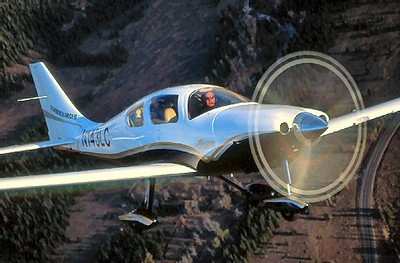
And yes, as compared to previous iterations, this was the most
improved airplane (and company) of the year for 2005 -- and 2006
has been no exception as the plane and company continue to mature
at a rate that has to make the competition nervous. The current
leadership is doing a magnificent job of keeping this company on
the right track.
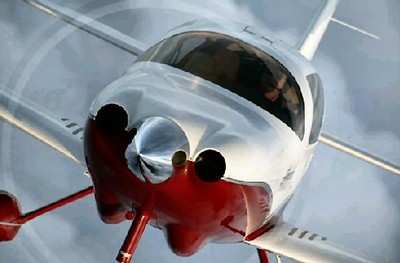
Now... if only this thing was either a six-seater... or
pressurized.... or both -- that would be an airplane without peer,
and one we'd dearly love to fly.
Mooney Acclaim
If their numbers hold up, Mooney's new bird may be the fastest
thing in the single engine piston business. For the better part of
two years that title is been claimed (without question) by
Columbia's speedy 400 which not only manages to be a fast airplane
but does it with fixed gear. The all metal Mooney, however, is a
firebreathing retractable built upon the lineage of a much favored
design series has fans all over the globe. Heck, the word 'fans,'
doesn't quite cover it... Mooney fans are nuts about their
airplanes... and for good reason (says the writer, who has owned
three...).

These uniquely appointed airplanes with the universally
recognized and slightly backwards canted stabilizer have been some
of the best performing and most ruggedly flown airplanes on the
planet... because they hold up to the use and abuse of the GA
flyer.
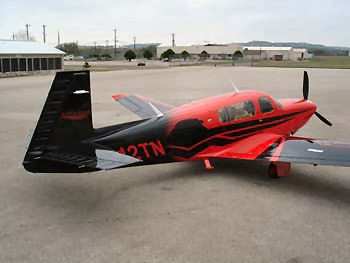
The Acclaim should be one hell of a hotrod, but since we have
not flown the aircraft yet we can only added to the category but
for the moment this bird will have to wait until next year's awards
to see if it can capture a top of category award. Still, the reason
we included in the category regardless of our having flown the
aircraft, is that when Mooney says they've got something good and
fast, you can count on just that.

The 237 knot Acclaim uses a Teledyne Continental TCM TSI0-550-G,
Turbo-normalized, Twin turbo, Dual intercoolers turbo normalize
twin turbo engine with dual intercooler's, producing 280 hp. A100
and 2 gallon fuel supply (130 gallons is optional) produces a range
of at least 1445 miles and as much as 1840 miles, with a service
ceiling of 25,000 feet.
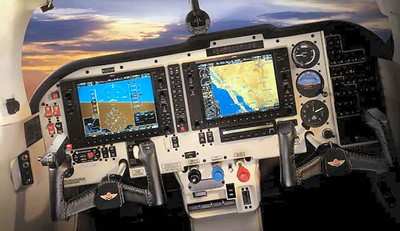
The $580,000 Mooney Acclaim comes out of the barn standard with
a Garmin G1000 EFIS system, as well as the highly lauded Garmin GFC
700 digital autopilot. TKS known icing protection is available as
an option.
Piper Malibu Meridian
The 2005 Piper Meridian, with hundreds of iterations now flying,
has been re-introduced with an aggressively updated panel,
featuring THREE Avidyne electronic displays, to produce a
thoroughly comprehensive cockpit that dazzles the eye and soothes
the brain of a traveling flyer. Unlike anything we've seen from
Piper before, this is NOT your Father's Meridian.
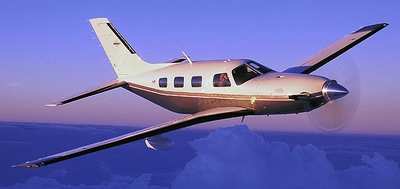
ANN got its hands on the new Meridian at the 2005 Oshkosh EAA
Fly-In, right after the end of a busy airshow day and while the
skies started to fill to the bursting point with all manner of
sport and general aviation aircraft looking to get the hell out of
dodge. The 1000 HP P&W PT-6A-42A (derated to 500 HP) got us off
Wittman Field's 18R with easy grace, out of the way of the majority
of our fellow flyers, and on to 14,500' in very little time.
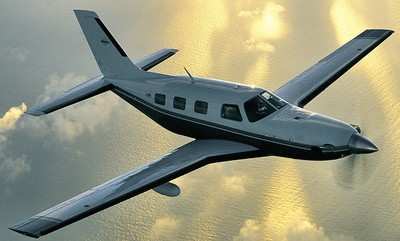
Initial takeoff acceleration is impressive, and despite having
to keep to the right side of the runway in order to accommodate
closely staged departures, the Meridian boasts excellent low-speed
directional control early enough to keep those 500 ponies pointed
EXACTLY where you need to go and away from Smedley's
(comparatively) slow-moving Vari-Eze on the left.
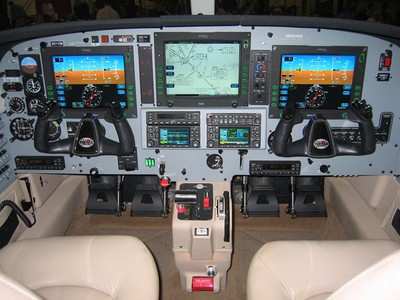
A quick jaunt to 12,500' and then to 14,500' proved that even in
such inefficient realms, the Meridian can still deliver as much as
210-220 kts, true, with little more than 1000 ft-lbs of torque. Up
in the mid-twenties, Meridian owners routinely brag about 250-260
knot cruise speeds.
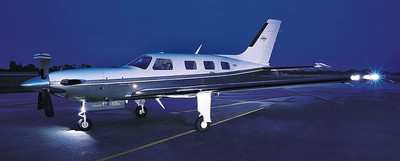
But, they should also be bragging about the low end of the speed
arc... whilst sandwiched into the arrival pattern at Oshkosh this
year, we wound up flying loose formations with RVs, Tri-Pacers, and
what have you at all of 75 knots... with excellent authority and
plenty of safety margin. All in all, a great experience.... but we
really think Piper needs to be bragging about the low-speed
authority of this creature as much as the high side... it's that
nice -- a cinch for inclusion on our 2005 Best of Breed list.
Robinson R44 Raven II
In a listing of high performance single engine fixed wing
aircraft, the Robinson R44 Raven II seems to be a bit of an odd
bird. However; the reason we include the R44 has nothing to do with
how it gains its lift, but with how well it performs its
mission.
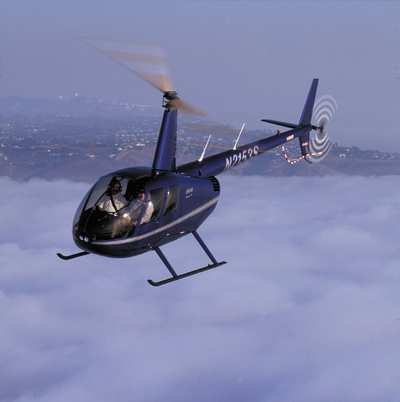
The Robinson R44 is one of the most successful four place
helicopters in recent history, having all the of the accoutrements
we've come to accept with turbine helicopters... but at a fraction
of the cost and complexity. The Raven II is equipped with a
fuel-injected, angle-valve, tuned-induction, IO-540 Lycoming engine
which produces substantially more power and performance than
previous versions of this helicopter. Another benefit of this
engine upgrade were improvements in both payload, and cruise/top
speed. The Raven II is a multi-talented airframe, available in a
number of ways... IFR Trainer, Newscopter, Police Helicopter, and
amphibious Clipper II.
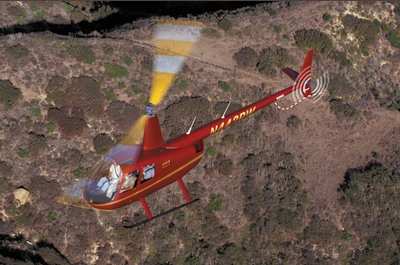
THe R44 can cruise at speeds as high as 135 mph, and offer over
400 miles of range. The Hover ceiling (at 2500 pounds, IGE--In
Ground Effect) is a stunning 8950 feet and the HOGE at 2300 pounds
is a still impressive 7500 feet. Its max operating altitude is
14000 feet and the rate of climb exceeds 1000 fpm at 25000 pounds
and 6000 feet. It's got horsepower, yes, but more important, its
got manners. The R44 is a very easy chopper to fly due to a
well-designed hydraulic control system and a rotor that sheds
energy reluctantly. Autorotation shores are child's play and I've
done repetitive hovering autos from 50 feet, with enough energy to
spare for secondary liftoffs and set-downs.
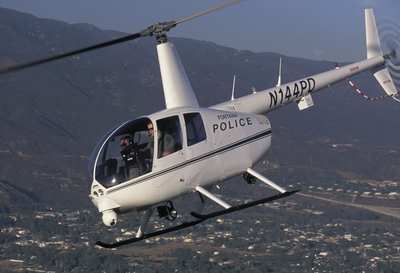
No, the $364,000 R44 Raven II will never give a Columbia 400 a
run for its money in terms of speed, but the other abilities it
boasts, in terms of VTOL flexibility make the R44 a better bird for
many fixed wing flyers with the need for VTOL capabilities than any
fixed wing bird we know. For the pilot with a bit of land to host a
personal heliport (for which RHCI offers expert assistance in
planning and construction) and the need to get in and out of small
areas like construction sites and the like, the R44 may be the
perfect GA Single-engine piston aircraft. In the four-place piston
helicopter biz, the R44 is without equal and is as nice a flying
helicopter as we know. Highly recommended.
Be sure to check back with us in a few days to see which of
these aircraft earned Top Honors as the "Best of the Breed" in this
category!
 ANN's Daily Aero-Linx (04.13.24)
ANN's Daily Aero-Linx (04.13.24) ANN's Daily Aero-Term (04.13.24): Beyond Visual Line Of Sight (BVLOS)
ANN's Daily Aero-Term (04.13.24): Beyond Visual Line Of Sight (BVLOS) Airborne 04.09.24: SnF24!, Piper-DeltaHawk!, Fisher Update, Junkers
Airborne 04.09.24: SnF24!, Piper-DeltaHawk!, Fisher Update, Junkers Aero-News: Quote of the Day (04.14.24)
Aero-News: Quote of the Day (04.14.24) ANN's Daily Aero-Term (04.14.24): Maximum Authorized Altitude
ANN's Daily Aero-Term (04.14.24): Maximum Authorized Altitude


























